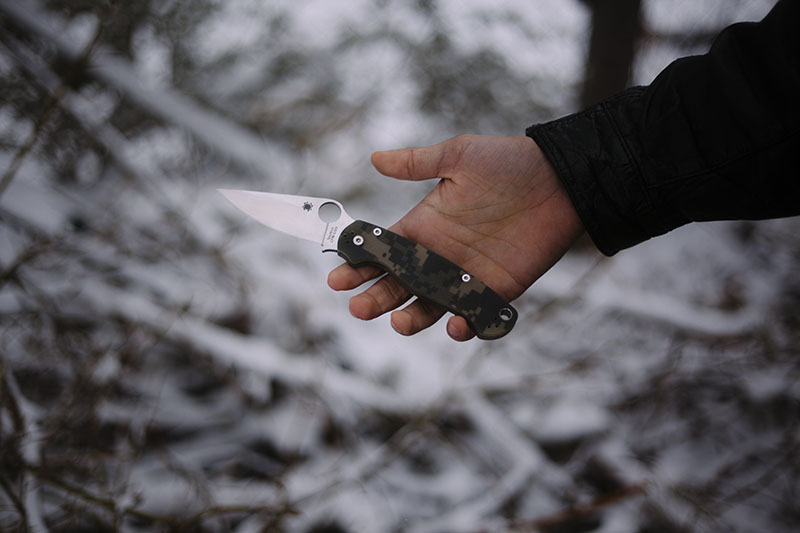In the fast-paced world of professional kitchens, having the right tools at your disposal is not just a matter of convenienceit's a necessity. Among these essential tools, the concept of EDC pocket knife rotation has gained significant traction. But what exactly does it mean, and why should kitchen professionals pay attention to it?
EDC, or Every Day Carry, refers to the practice of carrying a selection of items that are deemed essential for daily use. For chefs and kitchen professionals, this often includes a curated selection of pocket knives that are rotated based on the tasks at hand. This strategic rotation not only enhances efficiency but also ensures that the right knife is always at the ready for any culinary challenge.

Understanding the Basics of EDC Pocket Knife Rotation
The primary principle behind EDC pocket knife rotation is simple: having the right knife for the right job. Unlike a one-size-fits-all approach, rotating between different knives allows chefs to optimize their workflow and maintain precision in their craft. For example, a small folding knife might be ideal for intricate garnishing, while a robust, larger knife may be better suited for slicing through tougher ingredients.
This method of rotation not only maximizes efficiency but also prolongs the lifespan of your knives. By using each knife for its intended purpose, you reduce the wear and tear that comes from improper use. This is crucial in maintaining the sharpness and effectiveness of your tools over time.
Choosing the Right Knives for Your Rotation
When curating your EDC pocket knife collection, it's essential to consider the specific needs of your kitchen. Are you frequently working with delicate ingredients that require precision? Or do you often find yourself needing a knife with more heft and durability? Understanding your primary tasks will guide your selection process.
For those new to this concept, starting with a balanced mix of blades can provide versatility. Consider incorporating a pairing knife for detailed work, a chef's knife for general tasks, and a serrated knife for slicing through bread or tomatoes. For more insights into the types of knives that might suit your rotation, the Blade HQ Blog offers a comprehensive overview.
Maintaining Your EDC Pocket Knives
Proper maintenance is key to ensuring the longevity and performance of your knives. This includes regular sharpening, cleaning, and inspecting for any signs of damage. It's also important to store your knives appropriately to prevent unnecessary wear.
Many kitchen professionals swear by professional sharpening services, but you can also sharpen your knives at home using a whetstone or a knife sharpener. For a detailed guide on knife maintenance, you might find this article on knife show etiquette particularly useful.
Integrating EDC Pocket Knife Rotation into Your Routine
To effectively integrate EDC pocket knife rotation into your daily routine, start by assessing the demands of your kitchen. Identify the tasks that recur frequently and match them with the appropriate knives from your collection. This proactive approach ensures that you're always equipped with the best tool for the job.
Additionally, keep your knives accessible and organized. Many chefs use magnetic strips or knife rolls to keep their knives within easy reach. This not only saves time but also reduces the risk of accidents in a busy kitchen environment.
Innovations and Trends in Knife Design
As the culinary world continues to evolve, so too do the tools we use. Modern knife designs are increasingly focusing on ergonomics and functionality, catering to the diverse needs of chefs. Whether it's the introduction of new materials for blades or innovative locking mechanisms for folding knives, staying updated with these trends can enhance your EDC pocket knife rotation.
For those interested in exploring the latest in folding knife design, the article on folding knives in pop culture offers a fascinating look at how these tools have evolved over time.

Conclusion
Incorporating an EDC pocket knife rotation into your culinary practice can significantly enhance your efficiency and precision in the kitchen. By carefully selecting and maintaining a range of knives tailored to your specific tasks, you ensure that you're always prepared for whatever challenges the kitchen throws your way.
Remember, the key to a successful rotation lies in understanding your needs and choosing the right tools to meet them. As you refine your selection, you'll find that the benefits of this approach extend beyond mere convenience, contributing to a smoother and more productive culinary experience.
FAQs
What types of knives should be in an EDC pocket knife rotation?
A well-rounded EDC pocket knife rotation for kitchen professionals typically includes a pairing knife, chef's knife, and serrated knife. However, the specific selection may vary based on individual needs and tasks.
How often should I rotate my pocket knives?
The frequency of rotation depends on the demands of your kitchen tasks. Regularly assess your workflow to determine which knives are most frequently used and adjust your rotation accordingly.
How can I maintain my EDC pocket knives?
Regular sharpening, cleaning, and proper storage are essential for maintaining your knives. Utilize professional sharpening services or at-home tools like whetstones for optimal results.
This article contains affiliate links. We may earn a commission at no extra cost to you.


























